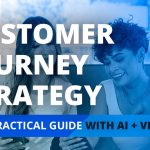Every year, HR leaders invest millions into benefits programs. Health coverage. Retirement plans. Wellness stipends. Discounts. Career development opportunities.
Yet when you ask employees what their company offers, the answers often sound like guesswork:
“I think I get something for health… maybe retirement too?”
The result is a hidden crisis of poor employee benefits communication: employees don’t fully understand their benefits—and they don’t value what they don’t understand.
A 2024 Payroll Integrations survey revealed that:
- 73% of employees want more education on their company benefits.
- 1 in 4 feel only a little—or not at all—informed.
- The problem is worst among Gen Z, where 42% feel underinformed, compared to 20% of Millennials.
The consequences are measurable. Employees who feel informed are far more likely to participate in benefits. Retirement plan participation jumps from 52% among uninformed employees to 70% among informed ones. For HSAs, the gap is even wider—15% vs 44%.
When benefits stay invisible, HR’s investments don’t translate into engagement, retention, or loyalty.
Why Salary Alone No Longer Retains Employees: The Role of the Employee Value Proposition (EVP)
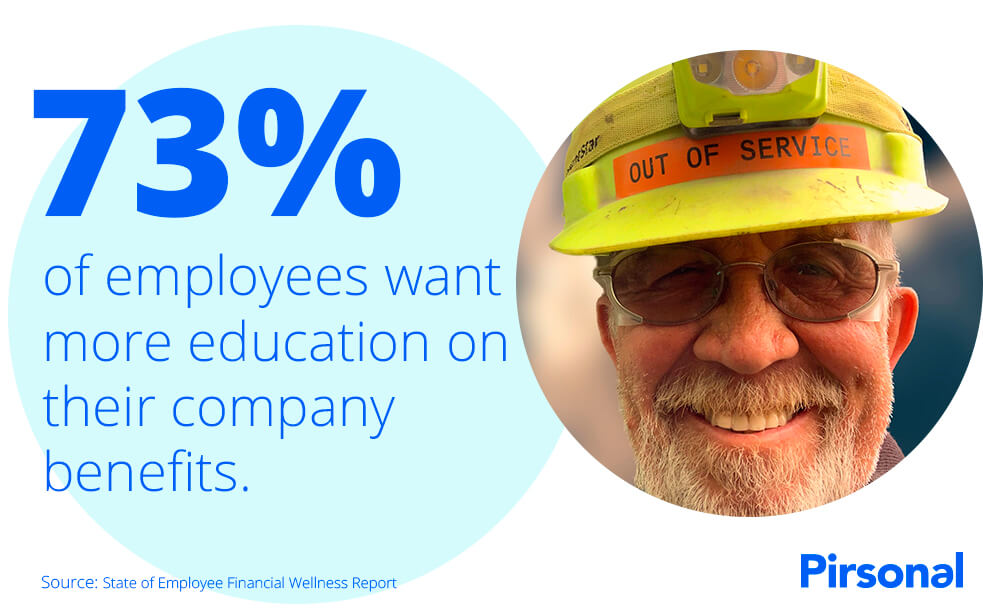
According to the inaugural State of Employee Financial Wellness Report by Payroll Integrations, 73% of employees want more education about company benefits.
Thirty years ago, salary was enough to secure loyalty. A steady paycheck meant employees stayed for decades.
Today? Salary is table stakes—the baseline expectation.
Employees across generations want more:
- Gen Z and Millennials increasingly look beyond money alone. Deloitte’s 2025 Gen Z and Millennial Survey found that nearly 90% say a sense of purpose is important to their job satisfaction and well-being.
- Gen X and Boomers prioritize clarity and security—particularly around healthcare and retirement.
- Across all groups, career development and benefits transparency consistently appear in the top drivers of retention.
This is the essence of the employee value proposition (EVP):
- Compensation (pay, bonuses)
- Benefits (healthcare, retirement, insurance, perks)
- Career (learning, advancement, development)
- Culture (purpose, belonging, inclusion)
- Experience (flexibility, recognition, well-being)
But if employees don’t see and understand their EVP, it might as well not exist. That’s where communication becomes the critical link between investment and retention.
The Cost of Poor Employee Benefits Communication on Engagement and Retention
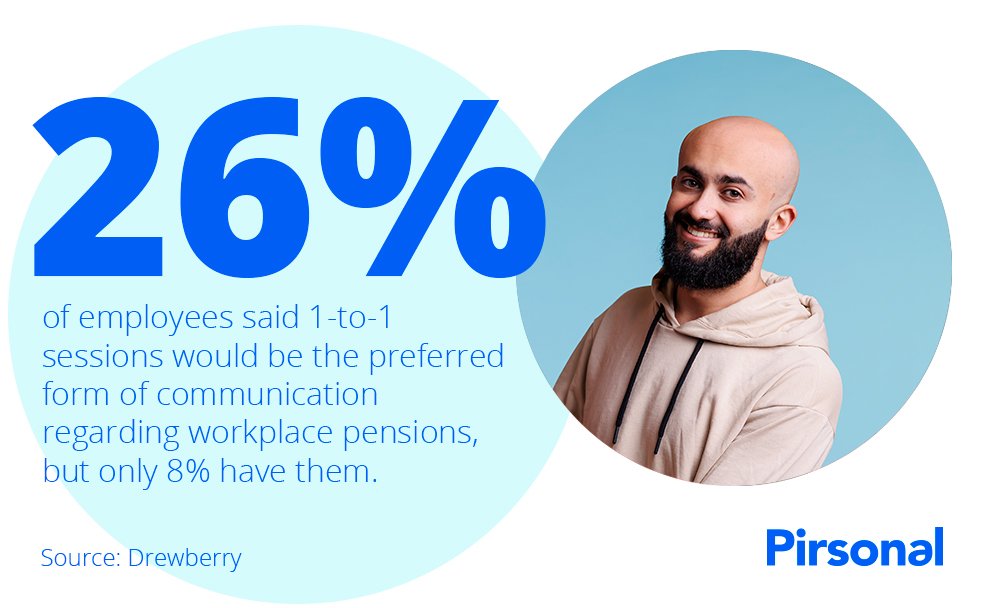
Employees prefer a personal touch but are not getting it from organizations
Invisible benefits are expensive.
- Wasted HR budgets → Employers pay for wellness and perks that employees don’t use because they don’t know they exist.
- Attrition costs → Replacing an employee can cost 6–9 months of their salary. Reed in Partnership estimated attrition at £30,000 per employee.
- Engagement loss → If employees don’t recognize the value their employer provides, they disengage.
- Reputation risk → On platforms like Glassdoor, “poor communication” and “unclear benefits” often appear in low reviews.
But the story doesn’t have to end here.
What happens when organizations approach employee benefits communication differently—making it visible, personal, and engaging?
Case Study: How Reed in Partnership Increased Employee Benefits Engagement with Personalized Video
Reed in Partnership is a UK social enterprise with 1,528 employees spread across the country. Their workforce ranges from 18-year-old new starters to 60-year-old veterans.
For years, HR relied on webinars, newsletters, and booklets to explain benefits. But the reality was clear:
- Attendance at webinars was low.
- Booklets went unread.
- Benefits remained invisible.
- Employees didn’t see the full value of working at Reed. Retention risk grew.
For full details about this benefits communication case study, watch the above video where I interview Reed in Partnerships Head of Pay and Reward Duncan Chapman regarding how they used personalized video to drive retention and clear benefits communication.
The Solution
Reed’s HR and Internal Comms teams decided to try something different. Together with Pirsonal, they launched personalized video campaigns to bring EVP to life.
Each employee received a short, personal video showing:
- Their name, role, and benefits package.
- Employer contributions and hidden perks they hadn’t used.
- Tailored calls-to-action linking directly to the company’s benefits portal.
Below is a personalized video example used for employee benefits communication:
Behind the scenes, the campaign combined:
- 11 dynamic assets per employee.
- Personalized landing pages.
- Secure UK-based hosting (ISO 27001, GDPR compliant).
- Collaborative execution between HR, Comms, and Pirsonal to ensure brand consistency.
The Results
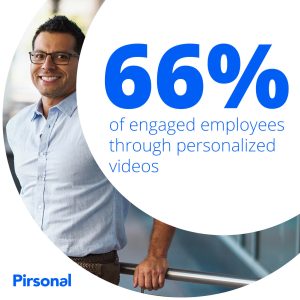
Case Study: 66% of employees were engaged with personalized benefits communication videos
The impact was immediate:
- 66% of employees engaged (viewed their video).
- 30% clicked through to explore benefits further.
- The company reported its highest ever satisfaction scores for inclusion and belonging.
Why It Worked
- Personalization: Each employee saw their EVP—not a generic list.
- Format: Video was easier to consume than booklets or hour-long webinars.
- Trust: Employees felt safe because data stayed in the UK under ISO-certified standards.
- Collaboration: HR didn’t do it alone—Comms and Pirsonal’s team provided the expertise and execution.
For Reed, EVP became visible. And employees responded with engagement, questions, and action.
Lessons HR Leaders Can Learn About EVP Communication from Reed in Partnership
Reed’s success isn’t a one-off. It highlights principles that apply across industries:
- Collaboration wins → HR + Internal Comms (and external partners) must work together.
- One-size-fits-all fails → Generic PDFs and mass webinars don’t cut through.
- Security is essential → Data privacy must be baked in, not bolted on.
- Personalization builds belonging → Employees feel valued when communication is tailored.
- Measure, then improve → Without engagement data, HR can’t prove ROI.
Best Practices for Employee Benefits Communication and Total Rewards
From Pirsonal’s work with Reed and other organizations, here’s a framework HR leaders can adopt:
- Clarity: Ditch jargon. Say “extra protection for your family” instead of “voluntary supplemental insurance coverage.”
- Relevance: Match messages to employee context—life stage, role, or location. Gen Z may value student loan support. Parents may need childcare. Near-retirees want pension clarity.
- Format: Go visual and mobile-friendly. Replace dense PDFs with short videos, infographics, or microsites.
- Interactivity: Guide employees with CTAs: “Enroll now”, “Book a call with HR”, “Explore your discounts.”
- Measurement: Track open rates, views, clicks, and follow-up questions. Iterate based on the data.
Why Personalized HR Video Communication Outperforms Traditional Methods
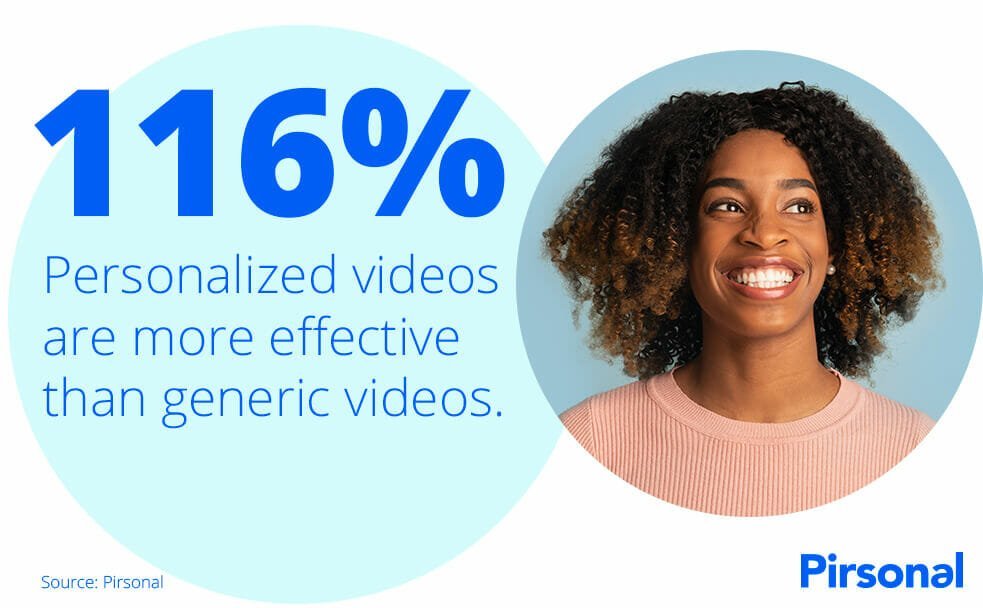
Personalized videos perform better than generic videos in 1:1 marketing
Personalized video combines clarity, relevance, and emotion in a way traditional comms can’t:
- 116% higher conversions vs generic video (Pirsonal research).
- Emotional connection drives loyalty: Motista found emotionally connected people have 1.5x longer tenure.
- Works across generations: Reed proved video works just as well for 18-year-olds as for 60-year-olds.
Imagine an employee watching a short video that says:
“Hi Sarah, here’s what your total rewards look like this year. You’re contributing £X, your employer adds £Y, and here are three benefits you haven’t taken advantage of yet.”
That’s not just information. It’s a story employees see themselves in.
Practical Steps for HR Leaders to Improve EVP and Employee Benefits Communication
You don’t need a massive overhaul to start.
- Audit your EVP comms. Which benefits are invisible? Which channels underperform?
- Spot the gaps. Look for programs with low enrollment or awareness.
- Pilot personalization. Start with one EVP element—like retirement or health benefits—and create a personalized video campaign.
- Measure results. Track engagement and actions taken.
- Scale and improve. Roll out annually, making EVP a living, visible story.
Tip: HR doesn’t need new headcount to pull this off. Pirsonal provides both the platform and hands-on support—helping teams design, launch, and measure EVP campaigns quickly.
Conclusion: Make Your Employee Value Proposition Visible to Improve Retention
Invisible benefits are wasted benefits.
When employees don’t understand their EVP, they undervalue their employer—and retention suffers. But when EVP becomes visible, personal, and secure, engagement and loyalty follow.
Reed in Partnership proved it. By turning ignored PDFs into personalized videos, they achieved 66% engagement, 30% action rates, and record satisfaction scores.
For HR leaders, this isn’t just about communication. It’s about retention.
If you want your employees to finally see and value their EVP, talk to an expert at Pirsonal. We’ll walk with you every step of the way.
FAQs on Employee Benefits Communication, EVP, and Retention
What is EVP in HR and why does it matter?
The employee value proposition (EVP) is the complete package an employer offers beyond salary, including benefits, culture, career growth, and well-being. A clear EVP helps improve employee engagement and retention.
How does employee benefits communication affect retention?
When benefits are poorly communicated, employees undervalue their employer and are more likely to leave. Clear communication improves participation, boosts engagement, and reduces attrition costs.
What is a total rewards statement?
A total rewards statement is a summary of an employee’s salary, benefits, and employer contributions. Delivered in personalized formats like video, it helps employees understand the full value of their compensation package.
Why do employees ignore HR communications?
Employees often ignore HR emails, PDFs, or webinars because they feel generic, complex, or irrelevant. Using personalized, visual formats like video increases engagement.
How can personalized video improve EVP communication?
Personalized video makes benefits relevant by showing each employee their own package, contributions, and unused perks. It simplifies complex information and includes calls-to-action to drive participation.
Is personalized video secure for employee data?
Yes. Platforms like Pirsonal are ISO 27001-certified, GDPR-compliant, and offer EU/UK/US data residency. This ensures sensitive employee benefits information stays private and secure.
What are examples of employee communication campaigns?
Examples include total rewards statements, annual results updates, new benefit rollouts, and policy changes. All of these can be delivered with personalized and interactive video to boost engagement.

